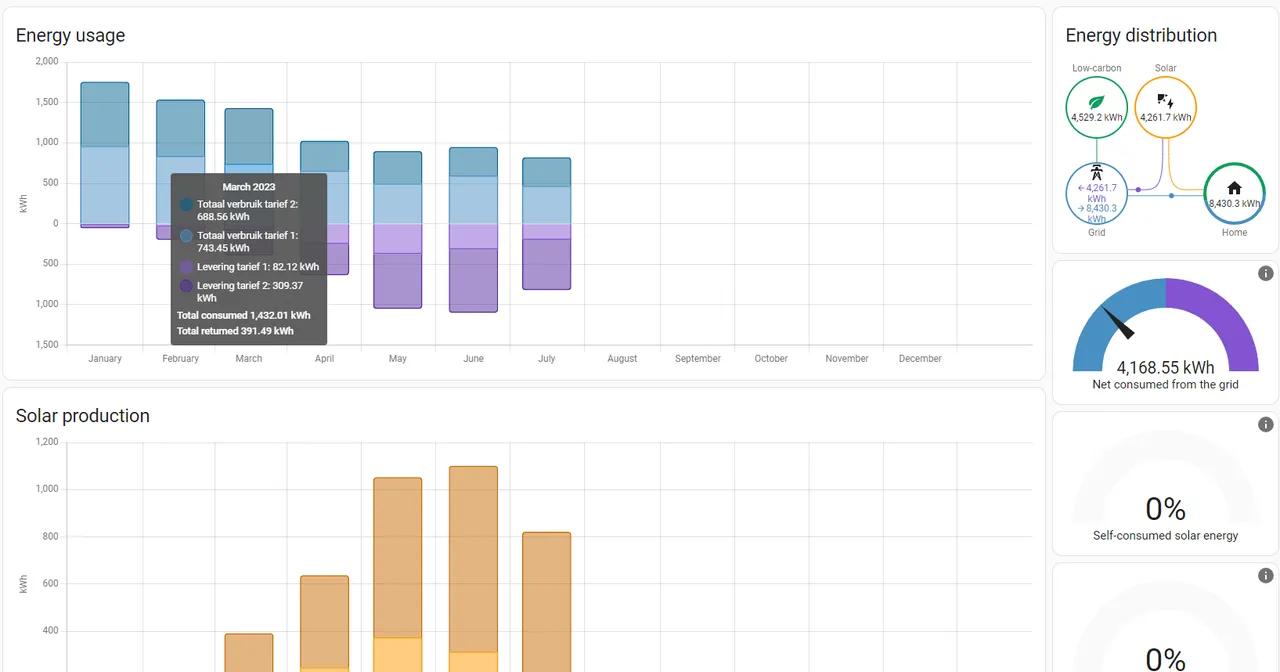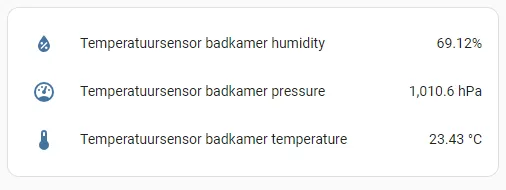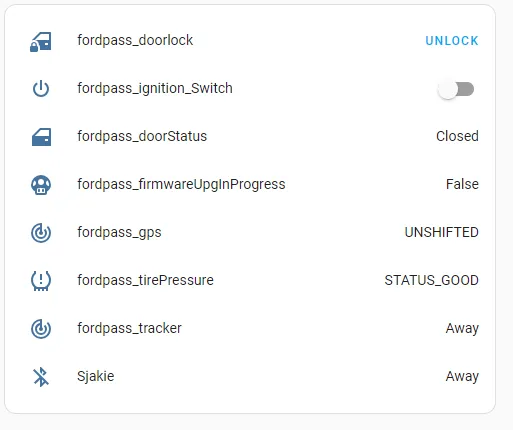As some of you may know, I am a home automation enthusiast. An avid user of Home Assistant for some time now. Home Assistant is an 'open source' project in which a dedicated team develops beautiful things.
In addition to the Home assistant software itself, many suppliers also develop integrations with Home Assistant that make life easier. Or, what you also see a lot, is that hobbyists write their own software for integration with Home Assistant.
The strength, for me, in Home assistant is in the simplicity of configuration and the visual possibilities. You can create beautiful dashboards that you can then (if you want) present on a tablet with a touchscreen. This way you can create a complete home automated environment. The possibilities are limitless :)
What do I use Homeassistant for?
- Front door camera
Control lamps

Information about the power consumption and production at home

Temperature and humidity in different rooms

Status of the car

- Cast audio and video
- Registration of who is or is coming home
Home assistant can be run on a Raspberry PI, but nowadays it is also often run on a mini PC or on a virtual platform. I still have it 'old skool' on a Raspberry PI 4 and it runs to my full satisfaction.
You can do the installation yourself, in which case you will need some Linux knowledge, or you can use an image that includes an auto-installer. I did the latter, I like the easy thing ;). After the software has been installed, you can log in with the account that was requested and created during the installation.
By default, Home assistant already recognizes quite a lot of integrations that you may have in-house. For example, the Ikea lamps, the WiFi lamps, the soundbar and televisions were recognised.

You also have devices per integration (for example, several lamps within the Ikea integration), and each device also (sometimes) has a number of entities. Such as color, brightness, etc. And so you can set and tweak all your devices the way you want them.
I have many devices that work via the Zigbee protocol. And without a Home assistant, they all work with their own bridge, which is, say, the router for the devices. Most brands have their own router, which prevents them from working together. But also other protocols, such as WiFi and Zwave. these are stand-alone protocols that 'actually' cannot work together. The beauty of homeassistant is that you can combine these different protocols. For example, a WiFi lamp and a Zigbee lamp in an automation where they turn on together when a certain condition is met (time, dark or something like that). Or a Zigbee sensor, when this is triggered a WiFi lamp is switched on. So it really becomes interoperable with different protocols, brands and devices.
I am now mainly busy automating all the things that I want to automate. When that's done, and to my satisfaction, I'll dig deeper into the layout and 'buttons' on my dashboards. So that we can also put a usable version on a tablet, so that everyone in the house can easily operate a few things.
I am curious, do you have home automation? And if so what?
Have a great weekend,
Take care,
Peter
